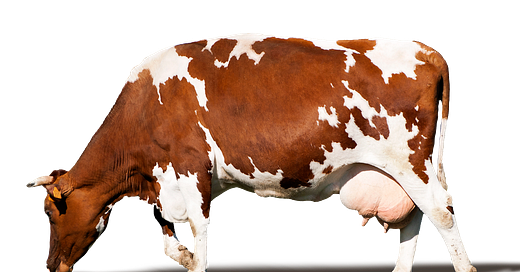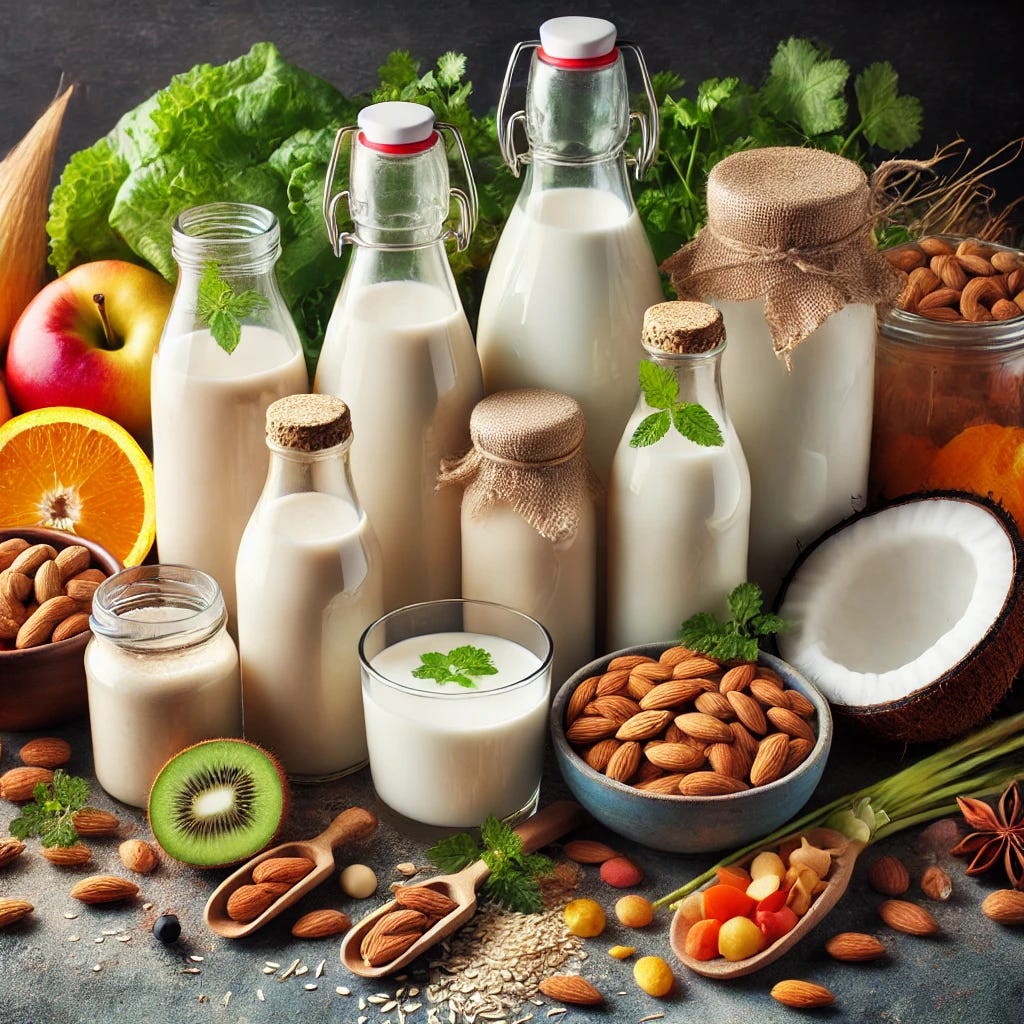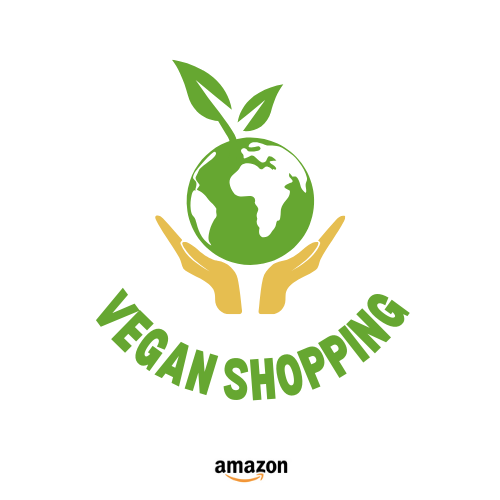
Dairy has long been a staple in many diets, from milk in morning coffee to cheese on pizza. It’s promoted as essential for strong bones and good health, and most consumers believe that buying "organic," "humane," or "pasture-raised" dairy means they’re making an ethical choice. But is that really the case?
Behind every carton of milk, wedge of cheese, or cup of yogurt lies an industry built on animal exploitation and suffering. The dairy industry has spent decades marketing itself as ethical and necessary, but when we look closer, we find that "humane" dairy is an illusion. Let’s break down the reality of dairy production, its impact on animals, health, and the environment, and why plant-based alternatives are the future.
The Reality of Dairy Farming
Many people don’t realize that in order for a cow to produce milk, she must first give birth. Like all mammals, cows only lactate after pregnancy, which means that the dairy industry relies on continuous forced breeding. Farmers artificially inseminate cows to ensure a steady supply of milk, but this process comes with severe consequences.
Once a calf is born, the mother’s milk is meant for her baby—but in dairy farming, that milk is taken for human consumption. The calf is separated from its mother within hours or days, causing immense distress. Mother cows often cry for their babies for days after separation.
What happens to the calves? Males are deemed "useless" to the industry because they don’t produce milk. Some are killed within days, while others are sold into the veal industry, confined in small crates until slaughtered at just a few months old. Female calves are raised to become dairy cows, continuing the cycle of forced impregnation and milk production.
Cows naturally live up to 20 years, but in the dairy industry, they’re considered "spent" by age five or six. At this point, their milk production declines, and they’re sent to slaughter, often turned into cheap meat or pet food. This short, grueling existence is the reality of dairy, no matter the size or label of the farm.
The "Humane" Dairy Myth
To counter growing concerns about animal welfare, the dairy industry has introduced labels like "humane," "pasture-raised," and "organic." These terms are meant to reassure consumers, but in reality, they do little to change the inherent cruelty of dairy farming.
"Organic" dairy means cows aren’t given synthetic hormones or antibiotics, but it doesn’t prevent forced impregnation, calf separation, or eventual slaughter.
"Pasture-raised" or "grass-fed" dairy may mean cows spend some time outside, but they’re still subjected to the same cycle of pregnancy, separation, and premature death.
"Small-scale" or "local" dairy operations still rely on exploitation. Even the smallest farms remove calves from their mothers and send unproductive cows to slaughter.
No matter how well-treated a cow is, dairy production always ends in suffering. "Humane dairy" is a marketing term, not a reflection of reality.
Health Implications of Dairy Consumption
The idea that dairy is necessary for strong bones and overall health is a myth perpetuated by industry-funded studies and outdated nutritional guidelines. Modern research shows that dairy can have negative effects on human health.
The Calcium Myth
For decades, dairy has been advertised as essential for bone health, but countries with the highest dairy consumption also have some of the highest rates of osteoporosis. Leafy greens, nuts, seeds, and fortified plant milks provide calcium without the negative side effects of dairy.
Lactose Intolerance and Allergies
Approximately 65% of the world’s population is lactose intolerant, meaning they cannot properly digest lactose, the sugar found in milk. This percentage is even higher among people of Asian, African, and Indigenous descent. Dairy can also trigger allergies, skin conditions, and digestive issues.
Hormones and Inflammation
Even organic milk contains natural hormones from lactating cows, which can disrupt human hormone balance. Dairy has been linked to increased inflammation, acne, and a higher risk of certain cancers, including breast and prostate cancer.
Given these health concerns, it’s clear that dairy is not a necessary or optimal food for human consumption.
Environmental Impact of Dairy Farming
Beyond animal cruelty and health risks, dairy production has a significant environmental footprint. The industry contributes to climate change, deforestation, water pollution, and resource depletion.
Greenhouse Gas Emissions
Dairy cows produce large amounts of methane, a potent greenhouse gas that contributes to global warming. The dairy industry’s carbon footprint rivals that of the beef industry, making it one of the most environmentally damaging agricultural sectors.
Water and Land Use
Producing dairy requires vast amounts of water. It takes approximately 1,000 gallons of water to produce just one gallon of milk. In drought-prone regions, dairy farming depletes essential water sources, making it unsustainable long-term. Additionally, dairy farms take up large amounts of land, contributing to deforestation and habitat destruction.
Pollution and Waste
Dairy farms generate massive amounts of manure and chemical waste, contaminating soil and water supplies. Runoff from dairy farms leads to algal blooms, which can create "dead zones" in bodies of water, devastating marine life.
Switching to plant-based alternatives drastically reduces environmental harm.
The Ethical Alternative: Plant-Based Milks
Fortunately, we don’t need dairy to enjoy creamy, delicious drinks and meals. Plant-based milks offer a variety of flavors and nutritional benefits without the cruelty or environmental destruction of dairy.
Popular Plant-Based Milks
Oat Milk – Creamy, rich, and great for coffee and baking
Almond Milk – Light, slightly nutty, and low in calories
Soy Milk – High in protein and similar in texture to cow’s milk
Coconut Milk – Rich, tropical flavor perfect for cooking
Hemp and Flax Milk – Nutrient-dense and packed with omega-3s
Sustainability of Plant-Based Milks
Compared to dairy, plant-based milks use significantly less water and land while producing far fewer emissions. For example, oat milk uses 80% less water and emits 70% fewer greenhouse gases than cow’s milk.
How to Transition Away from Dairy
If you’re ready to ditch dairy, making the switch is easier than ever.
Milk Substitutes – Try different plant-based milks to find your favorite.
Cheese Alternatives – Brands like Violife, Miyoko’s, and homemade nut cheeses offer great options.
Butter and Yogurt – Coconut-based yogurts and vegan butters make easy replacements.
Eating Out – Many restaurants now offer dairy-free options—just ask!
Cravings for cheese or milk-based products are often habit-based. Over time, taste buds adjust, and many people find they no longer miss dairy at all.
Conclusion
Dairy is not necessary, humane, or sustainable. Behind every "humane" label is an industry that relies on forced breeding, calf separation, and early slaughter. Dairy consumption is linked to health risks, and its production has devastating environmental consequences.
Thankfully, plant-based alternatives make it easy to opt out of this cruel system. Choosing dairy-free options is one of the simplest yet most impactful ways to support animal welfare, improve health, and protect the planet.
If you care about animals, the environment, and your own well-being, it’s time to rethink dairy. The future is plant-based—and it’s never been more accessible.
Get my new booklet ‘‘25 Vegan Myths Debunked!’’
This concise guide is invaluable for anyone curious about veganism, offering evidence-based insights and practical guidance to navigate vegan living confidently. All proceeds benefit the promotion of animal rights worldwide!
Visit Our Amazon Store!
Notice: As an Amazon Associate, we earn a commission from qualifying purchases that help promote animal rights worldwide!
General Resources
Books:
Dominion: The Power of Animals in Nature and in Our Imagination by Matthew Scully
Animal Liberation by Peter Singer
Eating Animals by Jonathan Safran Foer
A Billion Hungry Mouths: Feeding the World Without Consuming the Planet by Colin Tudge
Websites and organizations:
Documentaries:
Articles:
"The Case for Animal Rights" by Tom Regan
‘‘Why We Love Dogs, Eat Pigs, and Wear Cows: An Introduction to Carnism’’ by Melanie Joy
‘‘Animal Rights: The Abolitionist Approach’’ by Gary L. Francione
‘‘Fellow Creatures: Our Obligations to the Other Animals’’ by Christine Korsgaard
Seeds of Compassion: Finding Jesus Christ in a Vegan World by Michael Corthell
Receive a single informative article daily at 12:01 AM by email. Explore my homepage with exciting vegan and plant-based news content and delightful and delicious recipes for additional updates. Stay connected to the vegan world and all it has to offer.
Visit The Vegan Project Global our Facebook page for more vegan outreach and education.
The information on this vegan/plant-based blog is for general informational purposes only. It is not intended as legal, medical, or professional advice. Readers should consult with appropriate professionals for specific advice tailored to their situation. The blog owner is not responsible for any reliance on the information herein.






I’ve been a Vegan for 20 years and was a Vegetarian before that. I’ve attempted to tell people about some of the facts in your excellent post for ages and haven’t gotten very far, to be honest. Lifelong brainwashing means many people seem unable to make any decisions against the norm. I didn’t like cows milk when I was very young and haven’t drunk it for literally years and years and I’m still here. I was always being chastised as a kid for not drinking milk. However, being from a long line of self made stubborn people I persisted in refusing to drink it and I was obviously an awful child as I refused to eat cheese as well, and I’m still here!!!!!
My grandparents had a dairy farm in Wellington, CO in the 1950s, 60s and 70s. I remember hearing the mother cows bellowing for their babies but had no idea what was really going on at 10 years of age. My grandmother and my mother both suffered broken hips and vertebrae from osteoporosis even after drinking all the milk they wanted. So yes, what we are reading is correct. They were all brutalized by the cruel treatment of their livestock and my grandfather even used to chase grandmother around the farm beating her with a broom. No one ever stood up for her. Shame, shame, oh but they were good fundamentalist Christians who were better than the rest of us. Had to vent, sorry.